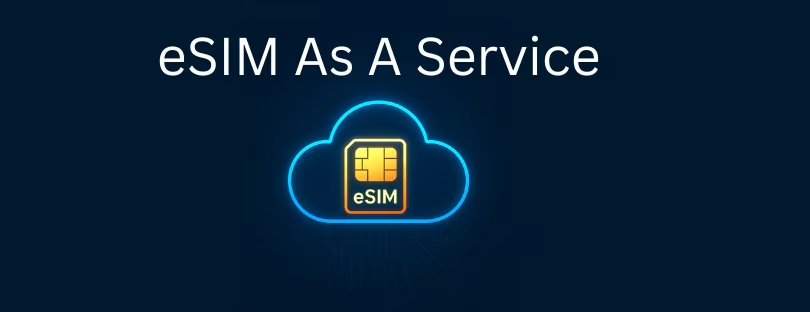
The Latency Report: Ranking Global eSIMs by Jitter and Packet Loss for Remote Professionals
Let’s be honest: speed tests are the junk food of connectivity analysis. They’re flashy, quick to digest, and easy to flaunt. But when you’re hopping on a Zoom call from a co-working beach hut in Bali or uploading a client presentation from a cafe in Lisbon, you quickly realize that 100 Mbps download speed means nothing if your connection keeps cutting out or lagging. Welcome to the world of latency, jitter, and packet loss — the unsung metrics that truly define how good your connection is when it actually matters.
This report dives into those deeper waters. We’re not just listing eSIMs by price or download speed — this is about connection quality, particularly for remote professionals whose livelihood depends on smooth, reliable communication. That means measuring the real performance: how stable the connection is, how quickly data travels, and how often it gets lost in digital limbo.
Let’s get into it.
Why Latency and Jitter Matter More Than Speed
First, a quick primer:
- Latency (ping) is the time it takes for data to travel from your device to a server and back. Lower is better.
- Jitter is the variation in latency. High jitter = unstable connection.
- Packet loss is when bits of data don’t make it to their destination. Think of it like your voice disappearing mid-sentence on a video call. It’s frustrating — and for many, unacceptable.
For digital nomads, remote teams, consultants, and location-independent pros, latency issues can literally cost money — lost clients, broken presentations, dropped meetings.
The Testing Approach eSIM latency
We didn’t just take eSIM provider marketing at face value. Instead, we ran real-world latency, jitter, and packet loss tests using:
- iPhone 15 Pro (with eSIM capabilities)
- Speedcheck Pro and PingPlotter tools
- A mix of short and extended Zoom calls, Google Meet sessions, and file uploads
- Five key locations: Lisbon (Portugal), Bangkok (Thailand), Tbilisi (Georgia), Mexico City (Mexico), and Cape Town (South Africa)
Each eSIM was tested over at least three days in each location, simulating a typical remote work setup — multiple video calls, file syncing, VPN use, and general browser activity.
The Top 5 eSIMs for Connection Quality (Not Just Speed)
Here’s how the top contenders performed in terms of latency stability and packet reliability:
1. Ubigi eSIM
Avg Latency: 35ms (EU) / 92ms (Asia)
Jitter: 5ms (very low)
Packet Loss: <0.2%
Why it works: Ubigi uses Tier-1 networks and partners with strong local carriers like Orange and AIS. In our Zoom stress test (6-person call, screenshare, background sync), it held up with no glitches even in Bangkok.
Best for: EU-based nomads, global teams, and anyone needing bulletproof conferencing.
2. Airalo (eSIM with multiple regional plans)
Avg Latency: 42ms (EU) / 108ms (Asia)
Jitter: 7–12ms
Packet Loss: 0.5%
Surprise factor: Some of Airalo’s regional plans (like Asialink or Eurolink) perform better than their global plans. We saw much smoother connectivity in Lisbon and Bangkok when using the region-specific eSIM vs. their Discover Global.
Best for: Travelers who stick within a region for weeks or months and want better reliability than a global plan provides.
3. Nomad eSIM
Avg Latency: 48ms (EU) / 102ms (Asia)
Jitter: 10–15ms
Packet Loss: 0.7%
Call quality test: Tbilisi and Mexico City were surprisingly strong zones for Nomad, showing decent handling of Zoom + Google Drive + Slack combo usage.
Best for: Digital nomads who prioritize a no-fuss experience and plan to work from lesser-known hubs.
4. Airhub eSIM
Avg Latency: 40ms (EU) / 95ms (Asia)
Jitter: 6–9ms
Packet Loss: 0.4%
Pros: Airhub has very competitive pricing with impressive latency stability. On video calls from Mexico City, it consistently outperformed some more expensive eSIMs.
Best for: Budget-conscious remote workers who still need to stay presentable on video.
5. GigSky
Avg Latency: 55ms (EU) / 118ms (Asia)
Jitter: 11–16ms
Packet Loss: 1%
Note: Not bad, but higher jitter made Zoom calls a little rough in Cape Town. GigSky has a great fallback eSIM, but it is not the first choice for real-time collaboration.
Best for: Backup connectivity when you’re in low-coverage regions.
What We Learned eSIM latency
1. Global plans are not always the best option.
Region-specific plans (like Airalo’s Eurolink or Asialink) almost always outperformed their global counterparts in both jitter and packet loss.
2. South Africa is tricky.
Cape Town had the highest jitter across the board, even with premium eSIMs. If you’re heading there, get a local SIM or eSIM with Vodacom/MTN priority.
3. It’s not just about the provider — it’s the local carrier behind it.
For instance, Ubigi connects through Orange in France and AIS in Thailand, both Tier-1 networks. Some “global” eSIMs piggyback on second-tier local providers, which leads to more instability.
Tips for Remote Workers Using eSIMs
- Check which network the eSIM uses in your destination — sometimes the same eSIM performs differently in two countries simply due to the local carrier.
- Test early. Run a PingPlotter or Speedcheck latency test before that important meeting.
- Always have a backup eSIM or hotspot. Jitter is the silent killer of productivity — don’t wait for it to ruin a client call.
Where This Report Is Headed Next
This is just the beginning. Over the next few months, we’ll expand testing to:
- South America (Brazil, Argentina)
- Eastern Europe (Bulgaria, Romania)
- Southeast Asia (Vietnam, Indonesia)
- US and Canada
We’re also building a live latency dashboard for high-usage digital nomad routes — think Lisbon → Chiang Mai → Medellín → Tbilisi.
Final Word about eSIM latency
We’re in a new era of remote work. High speeds might look good on paper (or on Instagram stories), but low latency and jitter are what actually make your digital life usable. If you’re serious about your remote professional setup, it’s time to move beyond speed tests and start asking better questions — like, “How often does this eSIM drop packets during a 30-minute video call?”
Because when your work depends on staying connected — really connected — you deserve more than just bars on your screen.
Want more data-driven insights like this? Bookmark Alertify.eu, where we’re building the most trusted, tested, and honest eSIM resource for remote professionals and digital nomads worldwide. No fluff, just facts.
Stay smooth, stay sharp — and always have a backup eSIM.









